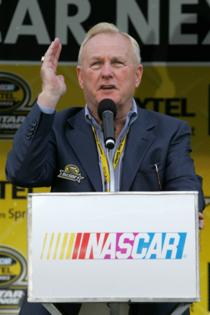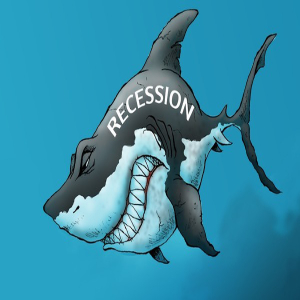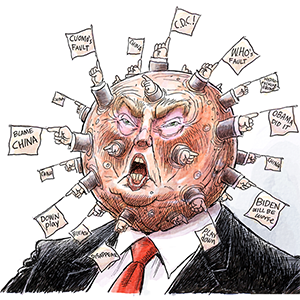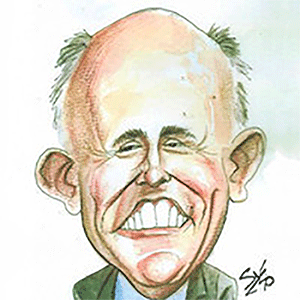Scott Fowler: NASCAR will never have another showman like Humpy Wheeler, who has died at 86
Published in Auto Racing
CHARLOTTE, N.C. — Man, I loved Humpy — just as most of the racing world did.
H.A. “Humpy” Wheeler Jr. was a one-of-a-kind showman, a NASCAR savant whose outlandish stunts sprang from one of the sport’s keenest minds.
Wheeler died of natural causes Wednesday, at age 86, surrounded by his family. For 33 years, he was the president and general manager of Charlotte Motor Speedway, where he and track owner Bruton Smith shepherded CMS to its current-day status as one of NASCAR’s crown jewels. Wheeler had been in declining health for some time, his daughter Patti Wheeler said Thursday.
When I first got to The Charlotte Observer, in 1994, my boss Gary Schwab made a list of people I should meet and talk to so I could better understand the region. At the top of that list was Wheeler, a whip-smart, hilarious, genial country boy from Belmont, N.C., who was a walking encyclopedia both of NASCAR knowledge and of what made race fans tick.
Wheeler would happily ride an elephant or stick his head in a tiger’s mouth to promote a race. To fill the hours before one of his spectacles, he would recreate the Battle of Grenada or introduce a metal-smashing robot called Robosaurus. School buses would jump things. Flames would sprout everywhere. Fireworks would light up the sky. Wheeler made racing an event with a capital “E.”
As Wheeler said in his farewell news conference in 2008, “I always liked to blow stuff up.”
Not all of his ideas became promotions, of course. Thankfully, Wheeler’s idea for a stunt that he wanted to call “Man vs. Shark: One Must Die” never got off the ground.
NASCAR’s P.T. Barnum
But while his nickname of the “P.T. Barnum of Motorsports” was certainly accurate, to only remember Wheeler as a promoter diminishes all that he was. Wheeler was also a devout Catholic and a family man, a father and grandfather who was married to the same woman for 63 years. He and his future wife Pat met while Wheeler was in high school, attending Charlotte Catholic.
The Wheeler family grew to include three children, four grandchildren and one great-grandchild. As its patriarch, Wheeler was always “making things big,” his daughter said Thursday.
“He was a larger-than-life presence, and that went for how he was at home, too,” Patti Wheeler said. “We would go to the beach like other families, but that’s where the similarities ended. He was just all about adventure and excitement. I mean, we didn’t go out for ice cream cones. We went traipsing through snake pits.”
Wheler understood racing at its most nuclear level — what it was and what he and CMS were ultimately selling to fans.
“What are people really buying when they go to a sports event?” Wheeler pondered once during one of our interviews. “They’re buying a drug. It’s called adrenaline. If you can’t create adrenaline rushes, people are just in an ordinary setting.”
Understanding NASCAR fans
Race fans always needed a villain, Wheeler always thought, which is part of why he loved Dale Earnhardt Sr. so much and tried to help nurture the career of “The Intimidator.” He was similarly an admirer of Kyle Busch and his racing style.
Fans also needed things that would grab their attention, make headlines and if possible end up on the right side of history, Wheeler believed.
That was one of the reasons Wheeler worked alongside Smith to bring Janet Guthrie to compete in the 1976 World 600, where she became the first woman to qualify for a race at a NASCAR superspeedway. Wheeler and Smith arranged and partly financed a car for Guthrie to drive, as well as a crew chief to lean on and a female team owner from Charlotte to help pay the bills.
“The reaction was generally good with the fans,” Wheeler told me in a phone interview in 2024 about Guthrie’s appearance 48 years before, which in retrospect has been widely celebrated. “It was something else for them to see. Part of a good show. But the reaction was horrible with the drivers. Some of them were like: ‘Why didn’t you buy me a car when I was a rookie?’ Or worse.”
The drivers would eventually get over it, though. Most of them always spoke fondly of Wheeler, because his love for the sport was so obvious. As NASCAR Hall of Famer Jimmie Johnson once told me when I asked why he liked Charlotte Motor Speedway so much: “The great promotions Humpy Wheeler had in his days of promoting, and all the wild things that would go on? That track has its own personality because of all of that.”
Wheeler also was well-known for helping people and institutions, whether it was Belmont Abbey or a boxing academy or a race driver or fan who was down on his luck.
“We were very aware of what he meant to the sport and what he did,” said Patti Wheeler, Humpy’s daughter. “But what has really been amazing during this outpouring of love and support is that we had no idea about how many people he had helped.”
Tragedies at the track
It wasn’t all roses, of course. In 1999, three fans in the stands were killed by a flying tire from a wrecked race car at Charlotte Motor Speedway, in an Indy Racing League series that Wheeler had heavily promoted. Wheeler would call that his worst day ever in racing. I got to know one of the victims’ families pretty well. That family was never the same, as you would imagine.
The very next year, in 2000, a concrete pedestrian walkway outside the fourth turn at CMS collapsed. No one was killed, but more than 100 spectators were hurt, some seriously.
But Wheeler kept going, through those tragedies and others. There was always another race to promote or interview to do. He was a joy to talk to, because he knew something about everything, and wasn’t hesitant to offer his opinion about any of it. He had an ego, too, as did his boss Bruton Smith, and their parting in 2008 was messier than it needed to be.
Smith and Wheeler would eventually make up, though. Said Doug Rice, the racing broadcaster who worked under Wheeler for 20 years. “That schism was healed,” Rice said.
Where did the ‘Humpy’ nickname come from?
As for that nickname:
Have you ever known a grown man who goes by “Humpy” before? The way it came about went like this, Wheeler once told me: Wheeler’s father was Humpy Wheeler Sr., and for a long time he was the athletic director at Belmont Abbey. At college in Illinois in the 1920s, Wheeler Sr. had a football coach who caught him smoking Camel cigarettes and made him run laps for it. The elder Wheeler was thus christened “Humpy,” to signify the camel’s hump.
That story had nothing to do with Wheeler’s son, but the nickname stuck to him anyway. The camel’s hump, so to speak, got passed down. The younger Wheeler would sometimes try to stop people from calling him “Humpy,” too, as a kid. Eventually, though, he accepted his fate, and the man who would grow up to become a racing visionary was called “Humpy,” just like his father had been.
Wheeler was also a fine amateur boxer who got a football scholarship to South Carolina. He dabbled briefly in auto racing himself, but then decided he was better at promotional work. And for him, it wasn’t all about hiring stunts and buying fireworks. Wheeler liked to tell his staff at CMS to pay close attention to the three T’s — tickets, traffic and toilets. Those were the key reasons why people would come back to another race, or not, he said.
But he did love the promotions, as well as the props. In his office at Charlotte Motor Speedway, Wheeler kept several jars of brownish-red homemade moonshine that were natural conversation pieces when the talk turned to NASCAR’s roots. He said that they came straight from legendary NASCAR driver and moonshiner Junior Johnson.
“When he left CMS in 2008,” Rice said in an interview Thursday, “he told me I could have anything in his office that I wanted. I asked for one of those jars of moonshine, and I’ve kept it ever since, to remind me of all the good times we had there. Humpy was eclectic, you know. To only talk about his flamboyance and the pre-race stunts — that sells him short. He was compassionate. Caring. A taskmaster. A reader. And he cared more about race fans than just about anyone I’ve ever known.”
In that first meeting we had in 1994, Wheeler told me that the speedway’s job was to inject “some technicolor into people’s black-and-white lives.”
This turned out to be a line he used quite often, and one that his family would adopt when explaining his legacy.
“What he wanted to do,” said Patti Wheeler, Humpy’s daughter, “is to make it all like ‘The Wizard of Oz.’ They’re in Kansas, it’s in black and white. And then they go to Oz, and everything is brightly colored. That’s what he wanted to do for everybody.”
Even the first time, I heard this analogy from Humpy Wheeler, I thought it was brilliant, and soon thought the same thing about Wheeler. I’ll miss him, as will the racing world.
But we’ll always have Robosaurus, and the flying school buses, and the bright colors Humpy Wheeler brought to all of us.
©2025 The Charlotte Observer. Visit charlotteobserver.com. Distributed by Tribune Content Agency, LLC.







Comments